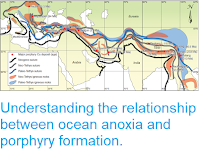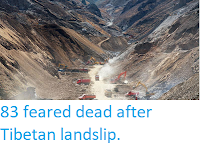Geologists have long used spectroscopy to identify mineral specimens in the laboratory, using the fact that different minerals reflect or absorb light at different spectral frequencies to make identifications without chemically or physically damaging the specimen. Recent advances in high resolution imaging has made it possible take this methodology out of the laboratory and use identify minerals in the field. Hyperspectral remote sensing uses imaging technology mounted on aircraft overflying an area to identify specifie minerals, principally those associated with ore bodies, enabling the initial stages of prospecting for minerals to be done without setting foot on the ground.
In a paper published in the journal Acta Geologica Sinica on 27 February 2018, Sun Yu, Zhao Yingjun, Qin Kai, Tian Feng, and Lui Pengfei, of the Beijing Research Institute of Uranium Geology and the National Key Laboratory of Remote Sensing Information and Image Analysis Technology, present the results of a study which used hyperspectral remote sensing to prospect for gold related minerals in the Xitan Region of Gansu Province, China.
Sun et al. used the technology to search for two gold associated minerals, limonite and sericite, which are both typically formed by the alteration of other minerals by hydrothermal activity, something which is also associated with gold deposits (fluids peculating through rock formations around tectonic boundaries can lead to gold being leached from rocks over a wide area and deposited in a relatively concentrated ore body).
They found both minerals were present in the area, with the sericite coming in two distinct forms, short and long wave, which has different spectra. Follow up surveys on the ground found that none of these minerals on their own indicated the presence of gold, nor did the presence of long wave sericite have any significance, however the combination of limonite and short wave sericite was a strong indicator for the presence of gold deposits.
Map showing comprehensive remote sensing and geological information of the Xitan region. (1) Inferred fault. (2) Limonite. (3) Short-wave sericite. (4) Long-wave sericite. (5) Geochemical samples with Au content less than 470 ppm. Sun et al. (2018).
See also...
Follow Sciency Thoughts on Facebook.







